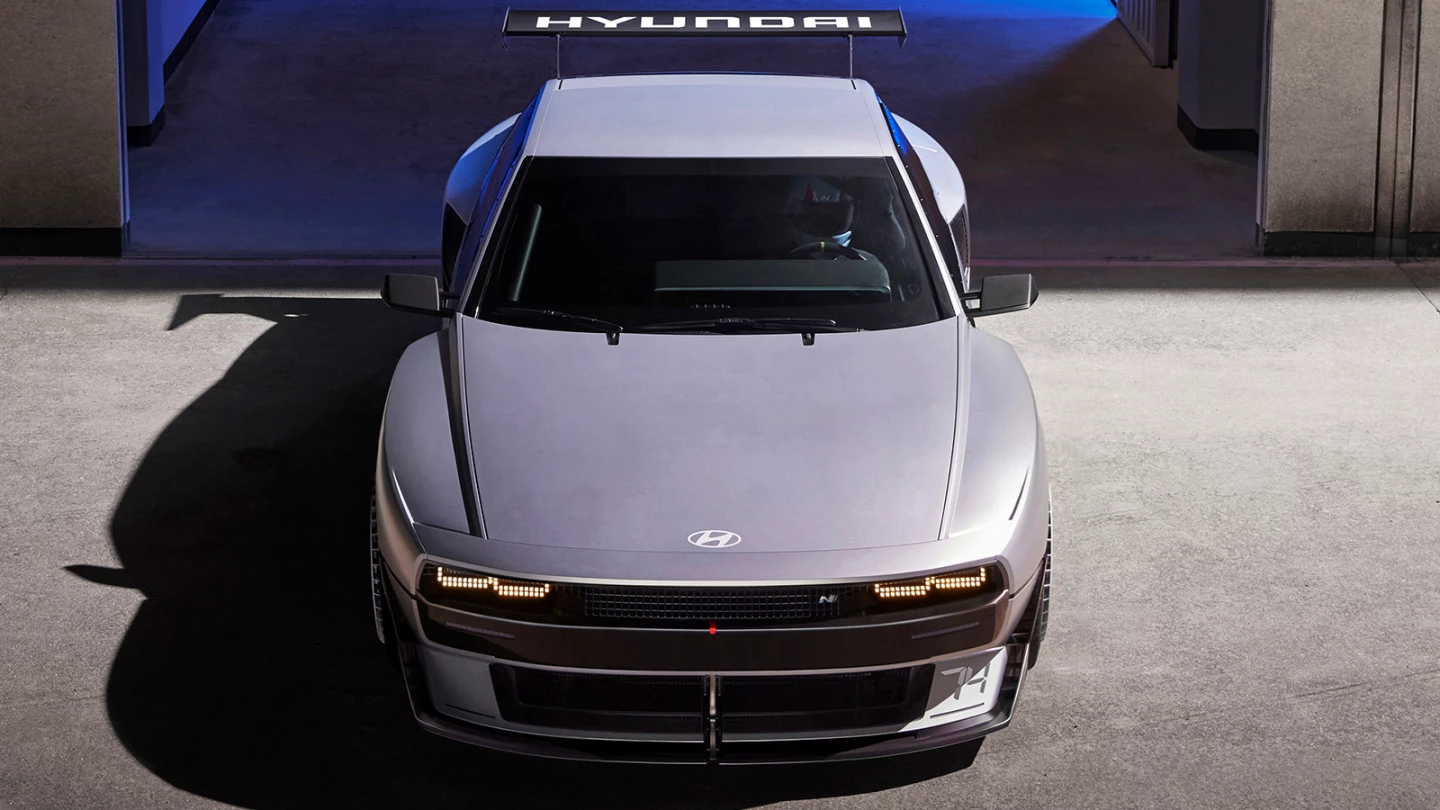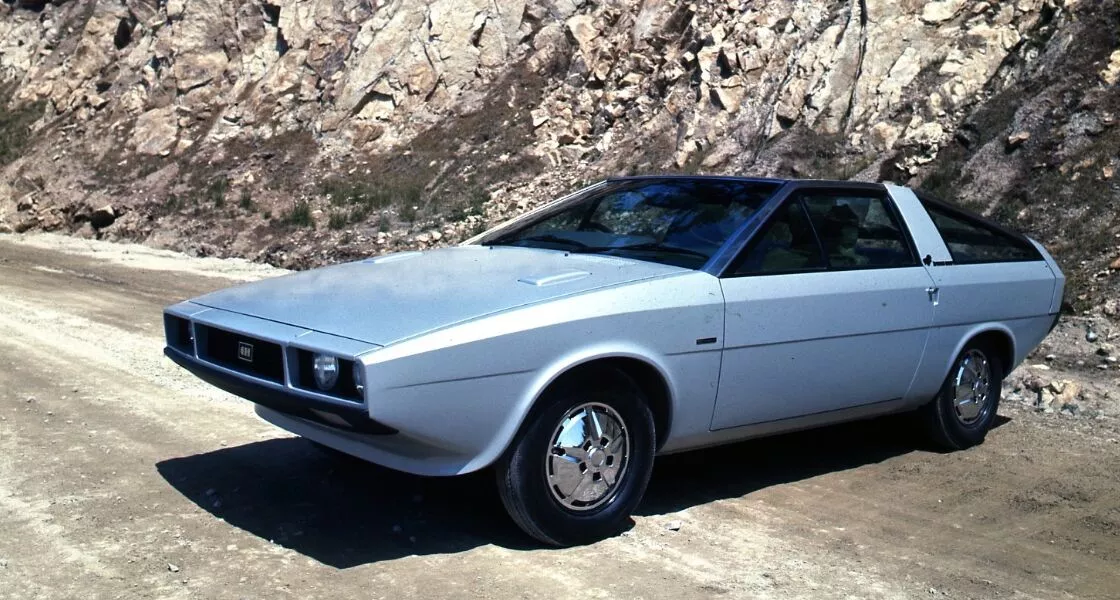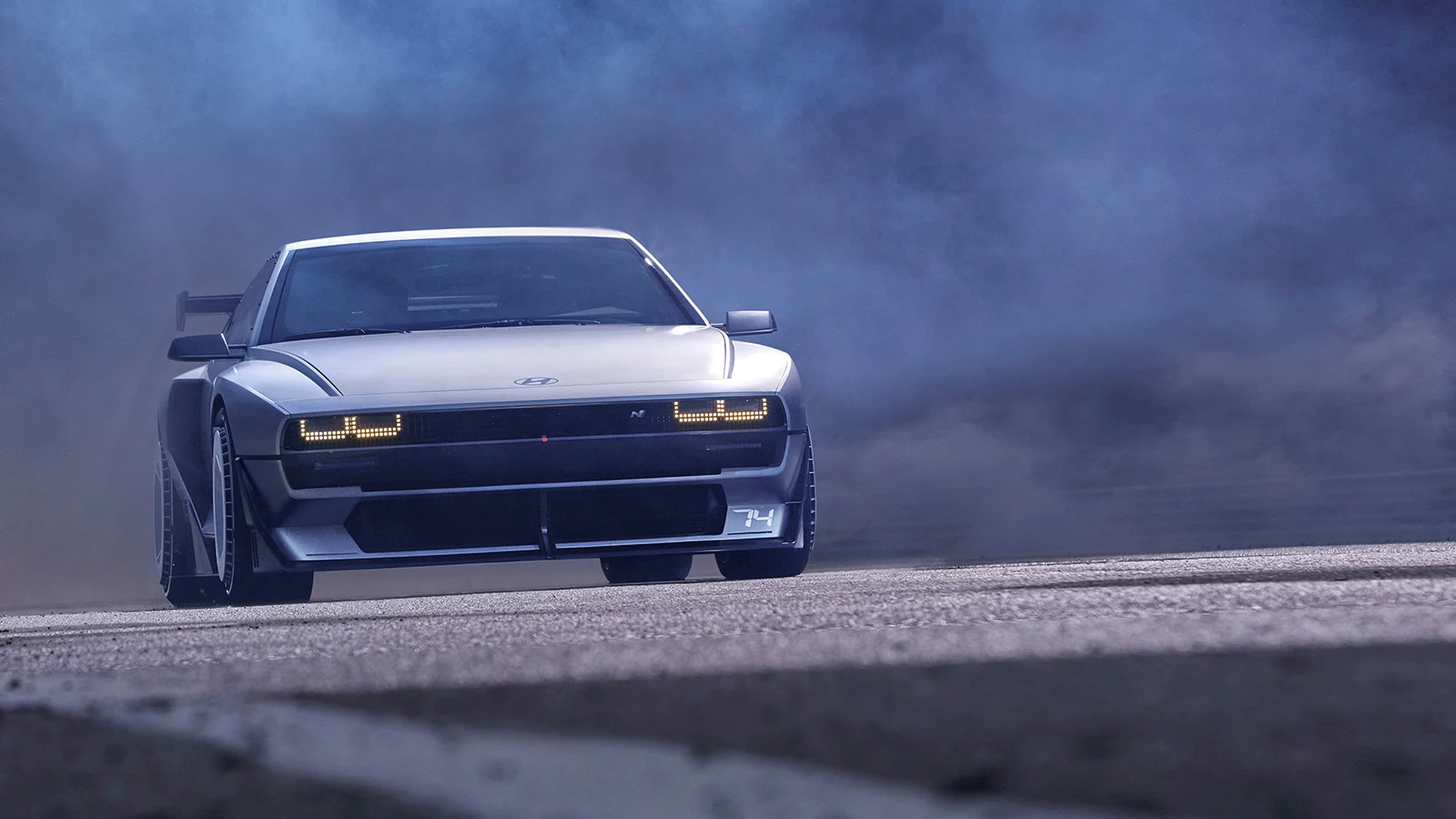Ever since Hyundai's zero-emissions N Vision 74 concept car first appeared on the scene a few years ago, car lovers have been desperate to see the thing move from prototype to product. Their wait may soon be over.
Hyundai appears to have confirmed that its ultra sexy fuel cell electric vehicle (FCEV) concept, the N Vision 74, is destined for production. The news comes via Hyundai's recent Investor Day, during which the South Korean manufacturer laid out its N Vision (see what we did there?) for the future.
A number of topics were covered, but the thing we're most interested in here is a single presentation slide, promising some 21 new EV models before the year 2030. The N Vision 74 was not actually pictured, but it was named.

Perhaps it wasn't pictured because the production model will veer from the concept in aesthetic. Or perhaps the aesthetic is just so awesome that it would distract from everything else Hyundai has planned. Imagine a car designed by an AI program that's been fed input from vehicles in Mad Max, Tron, and the DeLorean from Back to the Future: that's more or less the look of the N Vision 74.
But in fact, the car's true inspiration comes from a concept vehicle that Hyundai unveiled in 1974 (hence the N Vision 74's name). The Hyundai Pony Coupe was designed by Giorgetto Giugiaro and was supposed to have been the manufacturer's first sports car. Check it out:

Hyundai went so far as to produce a handful of prototypes, but ultimately the project was shelved. The cheap and cheerful Hyundai Pony that did get produced (from 1975-1990) was not nearly as cool – indeed, it served as the precursor for the first-gen Hyundai Excel, which was many things, but sexy and futuristic were certainly not among them.
But now, 50 years after the first concept, those Buck Rogers styling lines are back, this time adorning a twin-motor FCEV. With an FCEV, of course, you've effectively got an electric vehicle – in the sense that it's driven by electric motors – but instead of a huge, heavy battery pack, you've got a smaller buffer battery that's continually topped up by a fuel cell fed by gaseous hydrogen. Effectively, it's an EV you can fill up quickly at a fuel stop, provided hydrogen is available – we'll get to that in a minute!
Each of the N Vision 74's rear wheels is driven by a 235-kW motor, according to Hyundai, and the vehicle is capable of laying down 500 kW (670.5 bhp) and 900 Nm of torque (664 lb-ft) at full throttle.
It won't sound as good as it looks, though – despite the somewhat disingenuous audio overlays on the heavily produced video above from two years ago. The fuel cell system is more or less a silent chemical energy generator.
So unlike some of the shoutier hydrogen combustion-based machines we've been seeing lately, the N Vision 74 will make the same noise as an EV – ie. not much – as you can see in this footage of the concept car being driven at the Goodwood Festival of Speed last year.
But the range will be better, and you'll be able to fill it up more or less as quickly as a gasoline car. "Two hydrogen fuel tanks on the rear axle and the second-generation fuel cell stack on the front axle offers a new motorsports opportunity with fast refueling and long driving range," states Hyundai's N Vision 74 website.
Hyundai claims the N Vision 74 can cover more than 600 km (~370 miles) before refueling, and it might need every bit of range it can get, since hydrogen fueling stations are pretty hard to find. According to the US Department of Energy, there are just 59 hydrogen open retail fueling stations in the United States (as of 2023). In the United Kingdom, where I live, it appears there are just six stations open to the public, according to Driving Electric.
Things are better on Hyundai's home turf; South Korea has some 172 hydrogen refueling stations, according to Statista, a number that's risen by 250% since 2021.

Mind you, that's versus more than 10,000 places where you can fill up on regular gasoline. So even if South Korea continues its push toward hydrogen, I can't help but wonder how practical it'll be to own the N Vision 74 when it launches sometime before 2030. But then I look at the car again and I kind of don't care; being confined to a 370-mile radius from a refueling station would not stop me from wanting this thing.
As always, forward-looking investor presentations like this one should be taken with a grain of salt; it's a statement made in a fixed moment in time, with no knowledge of what comes next, and until the production Vision 74 is officially launched, we can't consider it guaranteed.
Back in 2017, for example, Harley-Davidson promised to deliver 100 new models in 10 years. Admittedly that decade isn't over yet, but based on the company's current progress (and the fact it has switched CEOs since that announcement was made), I'm not optimistic.

However, Hyundai's promise of 21 new cars in six years – 3.5 cars a year – seems a lot more manageable, and as a relatively niche product, we don't imagine the N Vision 74 will need to be manufactured in big numbers. We just hope it doesn't lose too much of its edge in the journey to production!
Source: Hyundai









